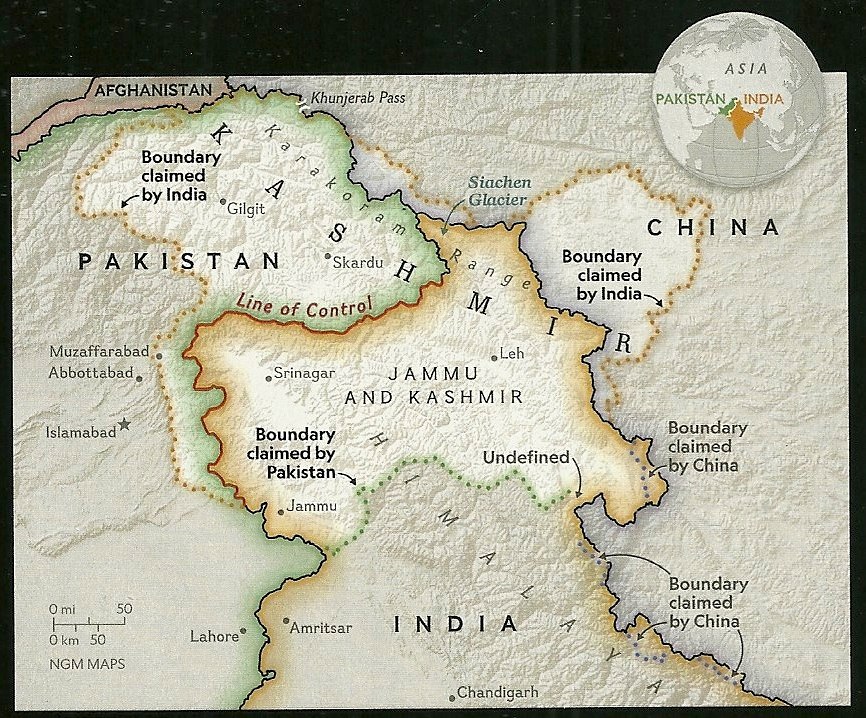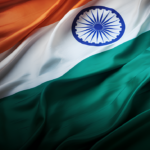
Often regarded as ‘heaven on earth’ or ‘paradise on earth,’ Jammu and Kashmir is home to some of the world’s most beautiful scenery. The region sits tightly between India, Pakistan, and China. Despite the great natural beauty of this Himalayan region, Kashmir for decades has been the subject of heated dispute between the three countries to which it borders, most notably between India and Pakistan.
Today, the population of Kashmir is approximately 12.5 million. India controls 55% of the geographical area, Pakistan 30%, and China the remaining 15%. The Line of Control separates the Indian and Pakistani territories, but this has not always been the case. The princely state of Kashmir was created in 1846 under the rule of the East India Company, which at the time was the ruling force. The 1857 Indian Mutiny led to India becoming a crown colony in 1858, which remained the case for several decades. However, it is important to note that the independent country of Pakistan was not created until 1947, the same time that India achieved its independence from British rule. It was this partition and subsequent independence that have predominantly led to the fierce contestation over Kashmir, despite the region being hotly contested even before 1947.
Under the terms of the Indian Independence Act 1947, an act that partitioned India into two new dominions of India and Pakistan, Kashmir was free to accede to either India or Pakistan. Hari Singh, the maharaja of Kashmir, initially desired Kashmir to become independent itself. But in October 1947, they ‘chose to join India in return for its help against an invasion of tribesmen from Pakistan.’ Unsurprisingly, this decision led to war. India appealed to the United Nations (UN) for help, to which they responded by suggesting a plebiscite to settle the matter, but neither side could agree to demilitarise the region before the plebiscite could take place, and as such, the war continued. However, a ceasefire was established in July 1949 in line with the desires of the UN, resulting in the region becoming divided according to which country owned what part of the region during the war. The peace did not last, with a second conflict in 1965 between India and Pakistan and then another subsequent clash in 1999. China also defeated India in a brief war in 1962 over the Aksai Chin border area. Conflict is a continuous characteristic of the Kashmir region, but not just through war. Between 1989 and 2008, the Indian government claims that some 47,000 people have been killed due to separatist violence. Conflict and violence unfortunately continued into the 21st century.
Today, both India and Pakistan claim Kashmir in full, with both sides actions since 1947 conveying their strong feelings towards the region. From an international perspective, the regions geographical divisions are considered ‘Indian or Pakistan-administered Kashmir,’ thus conveying the unsettled nature of the region. 21st-century events in Kashmir revolve around ceasefires and occasional peace talks ending in failure, while simultaneously the death toll continues to rise. In October 2002, over 300-500 people were killed during election campaigns regarding four rounds of polls to choose a new state administration. 2008 saw humanitarian workers uncover 1,000 unmarked graves near the Line of Control. Amongst this series of horrific events, a trade route was opened for the first time in six decades on the Line of Control, showing limited progress but nonetheless progress.
Unfortunately, the trend of violence continues into 2011, with soldiers and militants suffering losses on both sides. India even had to relocate over 10,000 people in 2016 from the disputed border area due to a rapid increase in tensions. Military activity has increased with airstrikes and aircraft being shot down in the region, while terrorism has been steadily growing. In 2019, the government of India revoked the special status or autonomy of Jammu and Kashmir, meaning the region has lost its statehood and is now simply two union territories.
Kashmir remains a great obstacle to improved Indian-Pakistani relations. Neither side is going to budge easily, although both are more than happy to retaliate against one another. Kashmir is just one of many territorial disputes, rivalries, and problems caused by British colonial rule that, at least for now, do not appear to be changing in the foreseeable future.
Image: Map of Kashmir, Nathan Hughes Hamilton, 2018//CC BY 2.0 DEED



Average Rating